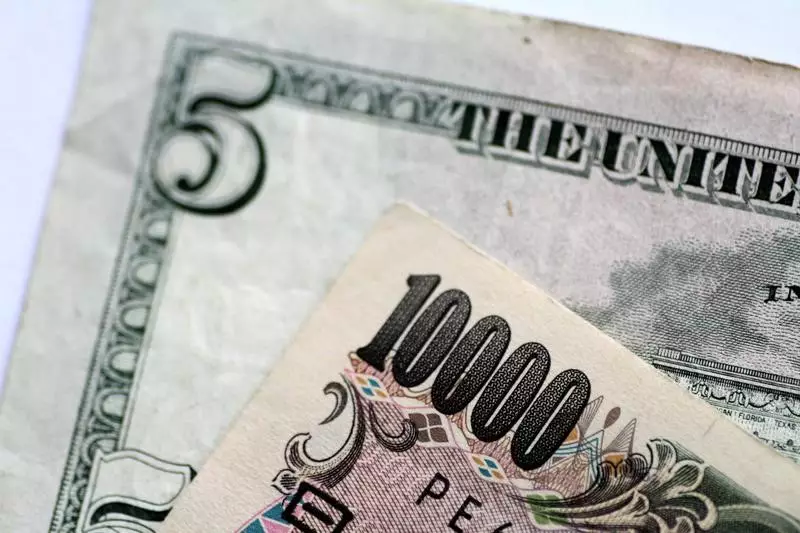Shifting Currents: A Critical Analysis of Recent Asian Currency Movements

As the financial landscape evolves, the performance of Asian currencies offers a revealing insight into the region’s economic health. Recent trends indicate a slight weakening of most Asian currencies, primarily influenced by the resilient strength of the U.S. dollar. This dynamic stems from growing anticipation surrounding the Federal Reserve’s monetary policy, particularly the implications of interest rate adjustments. Notably, as the Fed opts for a slower cadence in interest rate cuts, investors are bracing for the repercussions it may have on Asian markets.
The Japanese yen, traditionally regarded as a safe haven, is emblematic of the ongoing turbulence. With the yen stabilizing near its lowest point in three months, it has emerged as the sector’s weakest currency. This sentiment is compounded by impending political uncertainty, particularly with a closely contested general election on the horizon. The interplay between local politics and economic policy has a multiplying effect that exacerbates the volatility surrounding the yen.
The looming general election in Japan poses significant implications for the yen and broader market sentiment. Reports suggest that the ruling Liberal Democratic Party may struggle to secure a majority, leading to speculation about Prime Minister Shigeru Ishiba’s ability to implement comprehensive economic reforms. Furthermore, the heightened political uncertainty threatens to dampen investor optimism towards potential interest rate hikes by the Bank of Japan (BoJ).
As consumer inflation data from Tokyo showed a dip—falling below the BoJ’s target of 2%—the expectation of further monetary stimulus or restrictive measures seems increasingly problematic. Thus, the juxtaposition of weak economic indicators and political leadership queries undoubtedly weighs heavily on investor confidence, making the Japanese yen particularly vulnerable in these turbulent times.
While Asian currencies falter, the U.S. dollar continues to gather momentum, particularly against its Asian counterparts. The dollar index has demonstrated an upward trajectory, with market participants anticipating continued gains. Speculation surrounding former President Donald Trump’s potential return to the political arena in the 2024 elections also creates ripples within financial markets. The expectation that Trump’s policies would be inflationary adds layers of complexity to the dollar’s outlook, signaling a potential rise in U.S. interest rates in the long run.
The dollar’s strength during this period illustrates its role as a preferred asset in times of heightened market risk, showcasing investors’ tendencies to gravitate towards perceived stability. Such trends contribute not only to the performance of the dollar but also reshape the landscape for other currencies in Asia.
The reactions across major Asian currencies have varied, reflecting the localized impacts of these overarching trends. For instance, the Australian dollar and South Korean won demonstrated opposing movements — the former declining while the latter surged by 0.7%. The Chinese yuan also exhibited a modest uptick, likely influenced by strategic economic developments, including a postponed meeting of China’s National People’s Congress.
Conversely, the Indian rupee remains precariously close to record lows, signaling broader concerns about India’s economic resilience amidst external pressures. The juxtaposition of these diversifying influences highlights the heterogeneity of regional responses, necessitating a nuanced understanding of each economy’s unique circumstances.
The performance of Asian currencies is inextricably linked to a multitude of factors ranging from U.S. monetary policy to local political dynamics. As markets navigate these complex variables, the interplay between stability and volatility will likely dictate currency performance in the foreseeable future. Investors must remain cognizant of the evolving economic landscape, adapting their strategies in response to not only global trends but also local developments that may redefine market trajectories.
As we look ahead, the critical examination of these movements offers valuable lessons on the interconnectedness of global financial systems and the realities of navigating risk in an ever-changing world.





